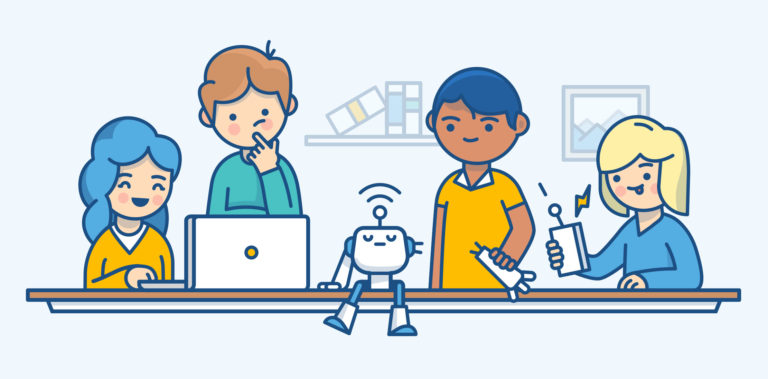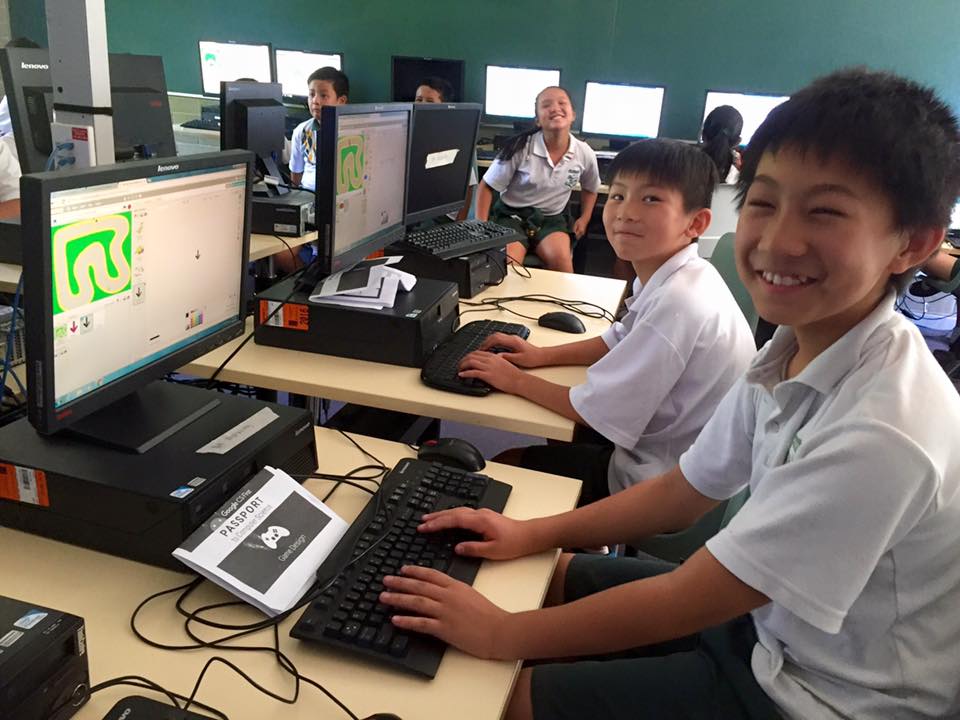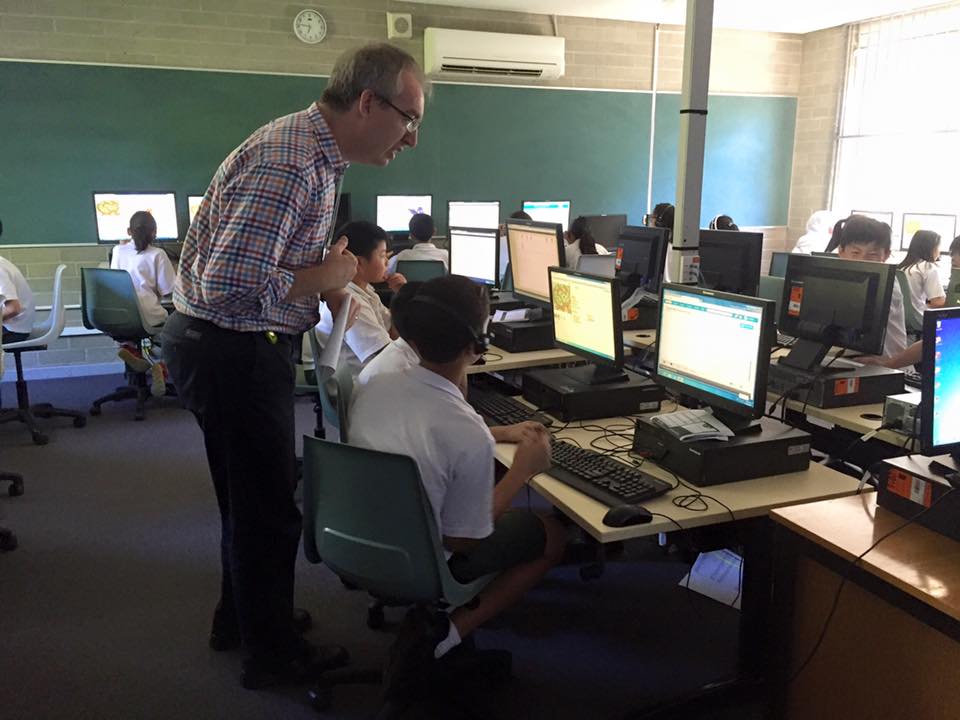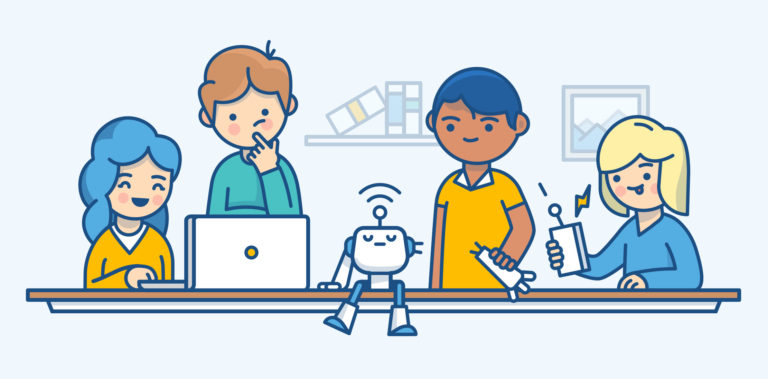
 “Good morning, Mr. Kelley!”
“Good morning, Mr. Kelley!”
Over the past year, I’ve enjoyed hearing this cheerful greeting from my students at the start of every class. No, I’m not a teacher; I’m a Senior Java Developer at Atlassian. But this year, I’ve been able to teach kids computer science education in a local Sydney school.
Like many places, Australia needs more graduates with technology skills, and, like many companies, Atlassian needs more graduates with technology skills. But in order to meet this need, kids have to learn technical skills, and that won’t happen without kids getting interested in technology. And, as a company of 1,600+ skilled tech workers, we’ve been trying to lend a hand by volunteering our time in public afterschool programs.
Google CS First
Luckily, we’re not the only ones to feel this need. Google has been a leader in computer science education for years, offering a free training program called CS First that teaches computer science fundamentals to young learners. With the number of Atlassian employees getting involved in the program, Google provided us with some helpful volunteer training in addition to the free training it provides on the CS First website.
CS First topics involve a 1-hour lesson each week during the course of 8 weeks. With the classroom teacher present, the volunteer’s job is to run each lesson. Usually, a lesson involves a series of short videos that explain the day’s assignment, and then they set to work. At the end of each lesson they have completed something, and we do a fun show-and-tell afterwards. In my classroom, we focused on how to make Computer Games, which was a lot of fun for the kids, and for me.

My first day of school
The first day went fast. Meeting the principal: “Why are you here in my school?” Meeting Julia, my classroom teacher host. (So helpful!) Meeting the class: “Good morning Mr. Kelley!”
It wasn’t long before some technical challenges set in. The school’s internet was not fast enough for 30 students to watch a video at the same time. Kids were getting bored waiting! What to do? Plugging my personal laptop into the video projector and tethering it to the 4G on my phone had us going again.
Going through the Computer Games topic, I worried it might be a bit tricky, but most of the students excelled at it. One of my fondest memories was watching one of the students complaining that the current task was too difficult. The girl next to her looked over and exclaimed, “Look, you just click here, drag over a block, and then it works. Okay?”
Another great moment was when two students from another class came into our room to get something. Staring at the screens as they walked past, they stopped dead in their tracks. “Hey, these guys are making their own computer games!”

Teaching the teachers
Seeing these kids respond so well to the course, I reached out to my local primary school to see if they were interested in bringing CS First curriculum there as well. It took some time but eventually the principal and I set up a meeting.
He had quite an interest in how primary schools in our state teach STEM, and how Atlassian was using CS First to help with that. He had some tough questions, too. How do we measure the baseline for students? How do we define success? How do we know if students achieved the goal? How does it fit with the state or national curriculum? As an educational intervention, how will we know if it achieved anything for students?
This experience piqued my interest in understanding what schools were actually doing in the area of Computer Science education. And what I found is that teachers are very interested in having their students learn computer science, even if they don’t have a technical background. Which was inspiring! The fact that educators are concerned with getting technical skills into the hands of their students without not necessarily knowing it themselves showed a real dedication to their students’ growth.
It dawned on me then that one of the ways we can contribute as workers “in the field” is to train teachers who can reach far more students than we can.
And that often starts with how we talk about Computer Science education with those we are hoping to help. For instance, I’ve had teachers I’ve worked with ask me, “Is this coding?” Even though that wasn’t technically the correct answer, I always answered these teachers, “Yes”, because hearing that I wanted to help with “coding” showed the teachers I was on their side. “Coding” is the current buzzword in computer education, and all schools are being pushed to do more of it. Showing your interest, coming alongside teachers, and helping schools meet their goals in STEM education is much more important than getting all the jargon right.
Eventually, at this particular school, I was able to lead teacher training in the CS First curriculum. While it is encouraging to see kids get excited about computer science, it’s even more rewarding to train teachers in the skills that will allow them to reach far more students than I can alone.
Come join the movement!
After this experience, I’m keen to further the impact I can have. My experience volunteering has led me to become more involved in the programmatic side of computer science education in schools, and I’m excited to get more schools up and running with CS First. And I’ll still continue to volunteer with students. Who can resist those beaming morning smiles?







































